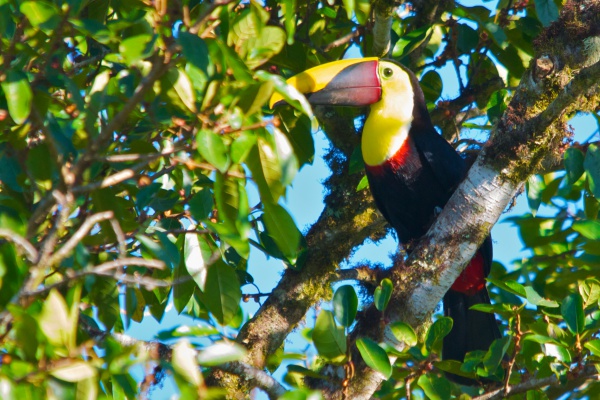Facts About Yellow-throated toucan
The yellow-throated toucan, a remarkable member of the Ramphastidae family, is native to Central and northern South America. While previously believed to be closely related to the Choco toucan, genetic studies have revealed that they are, in fact, quite distantly related. This vibrant bird is also known by several other names, including the black-mandibled toucan and the yellow-breasted toucan. There are three recognized subspecies, each with distinct distributions.
In terms of size, the yellow-throated toucan is impressive, measuring between 47 and 61 cm in length and weighing between 584 and 746 grams. Its plumage is predominantly black, but it features a bright yellow upper breast and throat, accented by a thin red border. The bird's massive, bicolored bill is another distinguishing feature.
This toucan can be found along the eastern slopes of the Andes, from Peru up to Venezuela. It inhabits a range of environments, from lowland plains to lush tropical and subtropical forests.
The yellow-throated toucan is known for its loud, far-reaching call. Its diet mainly consists of fruits, but it is not a selective eater—lizards, rodents, smaller birds, and insects are also part of its diet.
The breeding season for this toucan runs from March to June. They typically nest in cavities found in rotting wood high above the ground. Females lay between 2 to 4 white eggs, which are then incubated for about two weeks before hatching.

 Peru
Peru